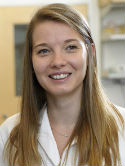RAS-mutant leukaemia stem cells drive clinical resistance to venetoclax Journal Article
| Authors: | Sango, J.; Carcamo, S.; Sirenko, M.; Maiti, A.; Mansour, H.; Ulukaya, G.; Tomalin, L. E.; Cruz-Rodriguez, N.; Wang, T.; Olszewska, M.; Olivier, E.; Jaud, M.; Nadorp, B.; Kroger, B.; Hu, F.; Silverman, L.; Chung, S. S.; Wagenblast, E.; Chaligne, R.; Eisfeld, A. K.; Demircioglu, D.; Landau, D. A.; Lito, P.; Papaemmanuil, E.; DiNardo, C. D.; Hasson, D.; Konopleva, M.; Papapetrou, E. P. |
| Article Title: | RAS-mutant leukaemia stem cells drive clinical resistance to venetoclax |
| Abstract: | Cancer driver mutations often show distinct temporal acquisition patterns, but the biological basis for this, if any, remains unknown. RAS mutations occur invariably late in the course of acute myeloid leukaemia, upon progression or relapsed/refractory disease1, 2, 3, 4, 5–6. Here, by using human leukaemogenesis models, we first show that RAS mutations are obligatory late events that need to succeed earlier cooperating mutations. We provide the mechanistic explanation for this in a requirement for mutant RAS to specifically transform committed progenitors of the myelomonocytic lineage (granulocyte–monocyte progenitors) harbouring previously acquired driver mutations, showing that advanced leukaemic clones can originate from a different cell type in the haematopoietic hierarchy than ancestral clones. Furthermore, we demonstrate that RAS-mutant leukaemia stem cells (LSCs) give rise to monocytic disease, as observed frequently in patients with poor responses to treatment with the BCL2 inhibitor venetoclax. We show that this is because RAS-mutant LSCs, in contrast to RAS-wild-type LSCs, have altered BCL2 family gene expression and are resistant to venetoclax, driving clinical resistance and relapse with monocytic features. Our findings demonstrate that a specific genetic driver shapes the non-genetic cellular hierarchy of acute myeloid leukaemia by imposing a specific LSC target cell restriction and critically affects therapeutic outcomes in patients. © The Author(s) 2024. |
| Keywords: | genetics; mutation; leukemia, myeloid, acute; antineoplastic agents; antineoplastic agent; mouse; animal; metabolism; animals; mice; protein bcl 2; gene expression; drug effect; drug resistance; pathology; drug resistance, neoplasm; inhibitor; cell lineage; neoplastic stem cells; sulfonamide; sulfonamides; cancer stem cell; ras protein; anatomy; ras proteins; monocyte; monocytes; drug therapy; fused heterocyclic rings; proto-oncogene proteins c-bcl-2; acute myeloid leukemia; cell component; humans; human; female; venetoclax; bridged bicyclo compounds, heterocyclic |
| Journal Title: | Nature |
| Volume: | 636 |
| Issue: | 8041 |
| ISSN: | 0028-0836 |
| Publisher: | Nature Publishing Group |
| Date Published: | 2024-12-05 |
| Start Page: | 241 |
| End Page: | 250 |
| Language: | English |
| DOI: | 10.1038/s41586-024-08137-x |
| PUBMED: | 39478230 |
| PROVIDER: | scopus |
| PMCID: | PMC11618090 |
| DOI/URL: | |
| Notes: | Article -- Source: Scopus |
Altmetric
Citation Impact
BMJ Impact Analytics
MSK Authors
-
 215
215Papaemmanuil -
 14
14Sirenko -
 4
4Hu
Related MSK Work



